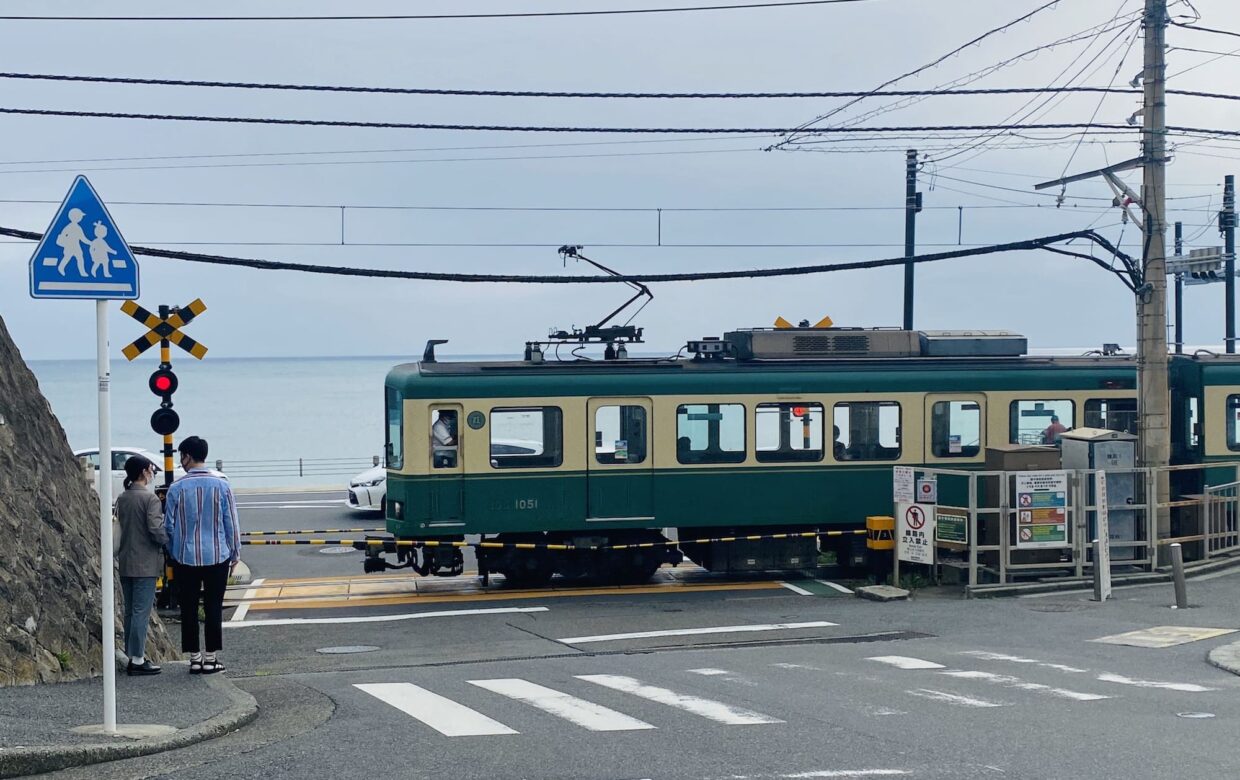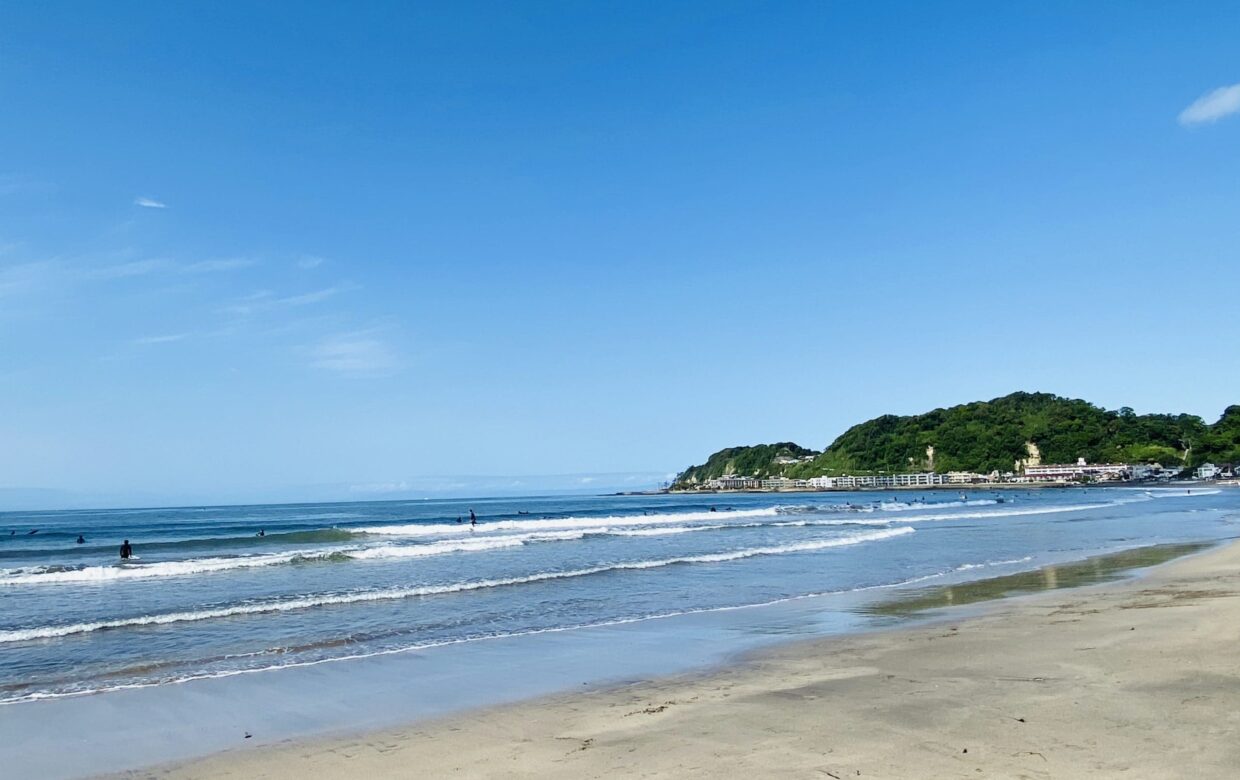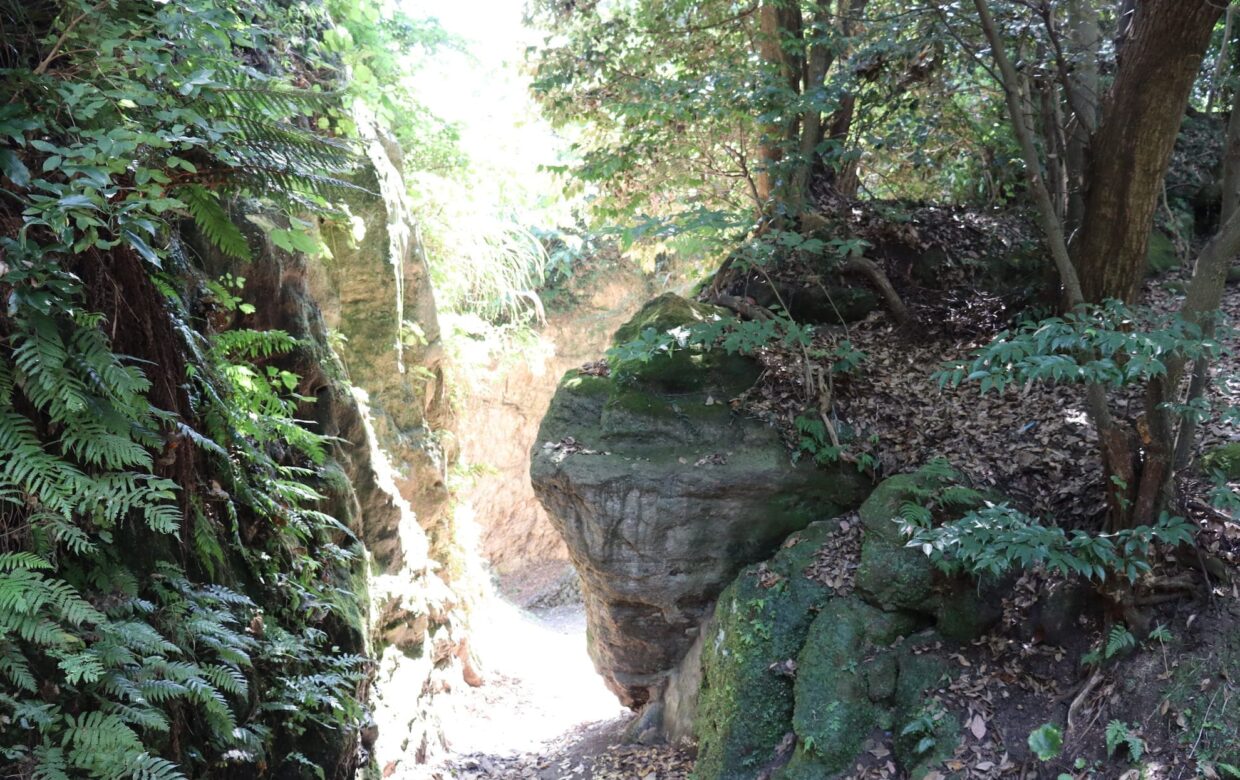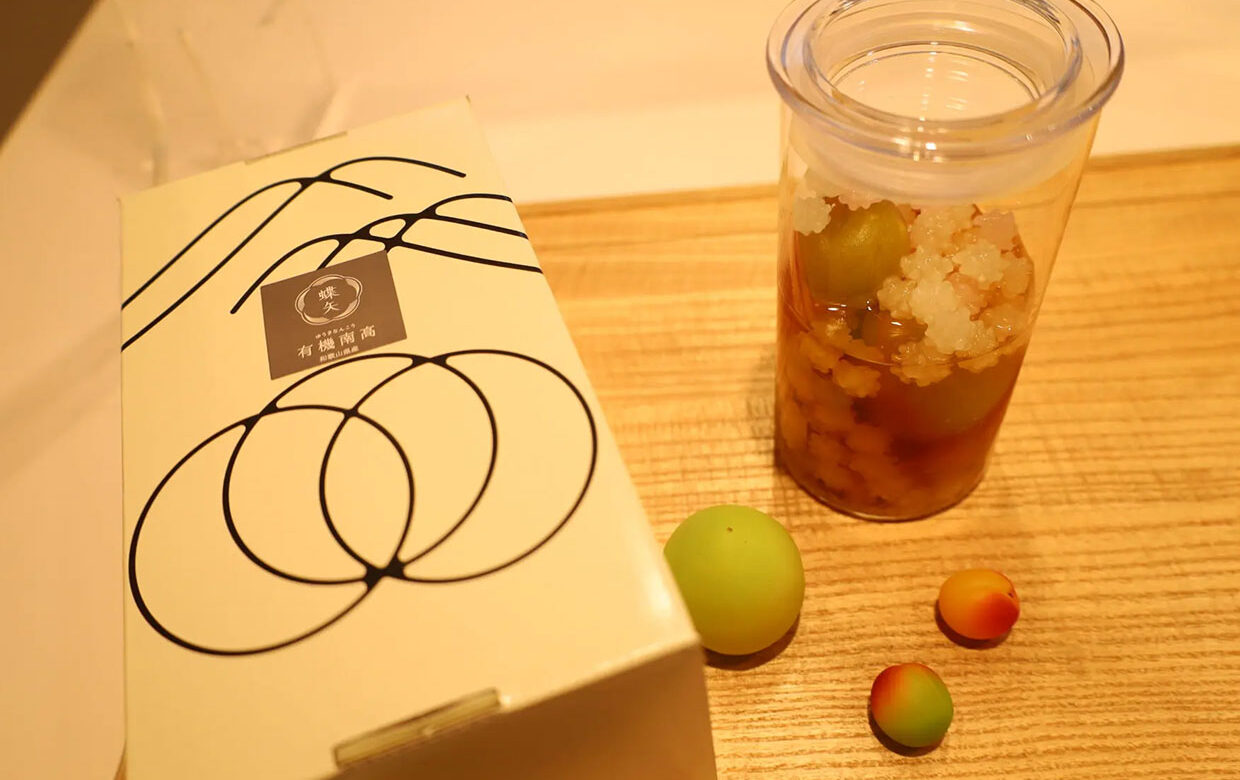Two of Kamakura’s Must-See Locations – The Kamakura Buddha and Kotoku-in
Kotoku-in is located near Hase Station is the well-known, must-see Kamakura’s tourist spot. While the large statue of Buddha is an incredible feature, there’s more to see and do!
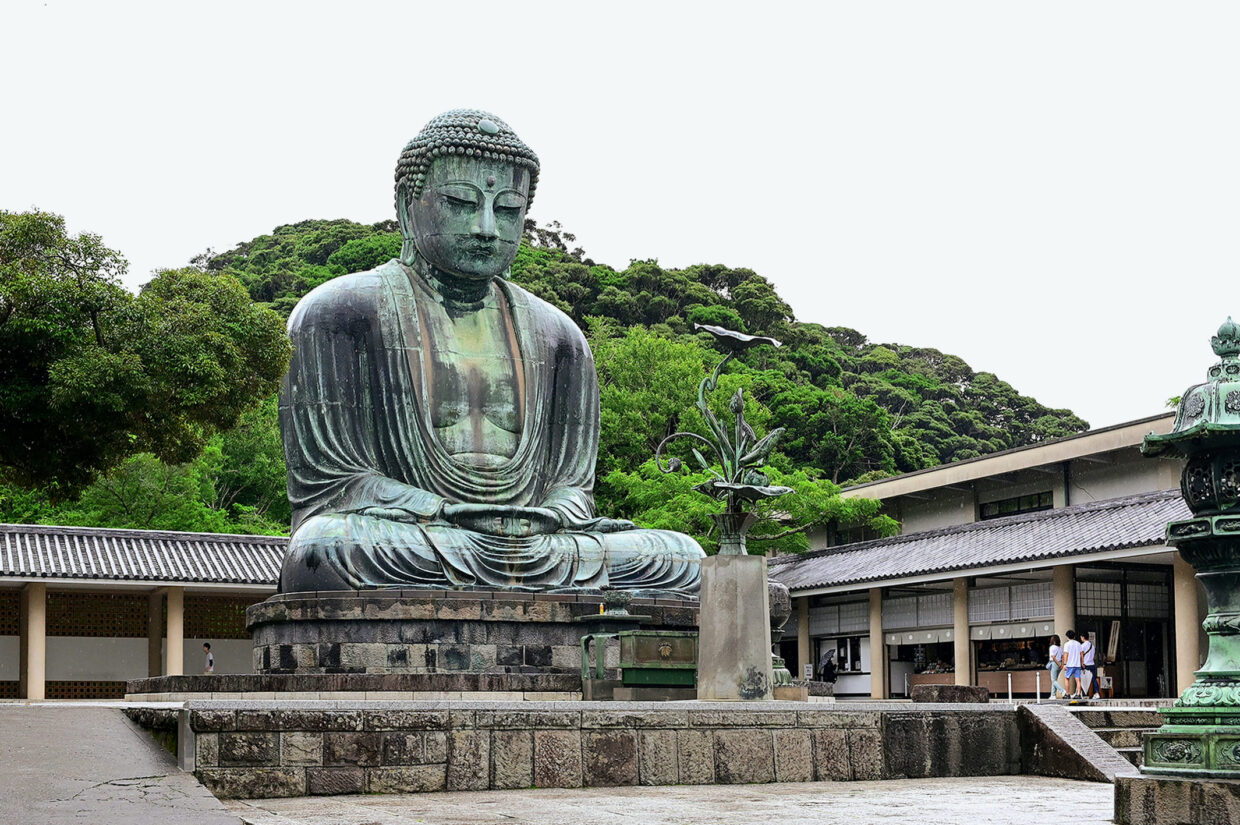
What is Kotoku-in?
Kotoku-in and its Buddha, the Kamakura Buddha, are located nearby Hase Station, making them the perfect stop on a walking-tour. The temple is a part of the Japanese sect of Buddhism known as “Jodo-shu,” which was established by Shonin Honen (1133 – 1212).
Jodo-shu teaches the prayer known as “nembutsu” and preaches that any person, regardless of one’s virtues or faults, age, gender or status, can call upon the Amitabha Buddha to receive divine protection and, in death, be welcomed into the Pure Land of Buddhist Paradise(Gokuraku Jodo).
Nio-mon (The Deva Gate) and the Two Nio-zo (Deva God statues)
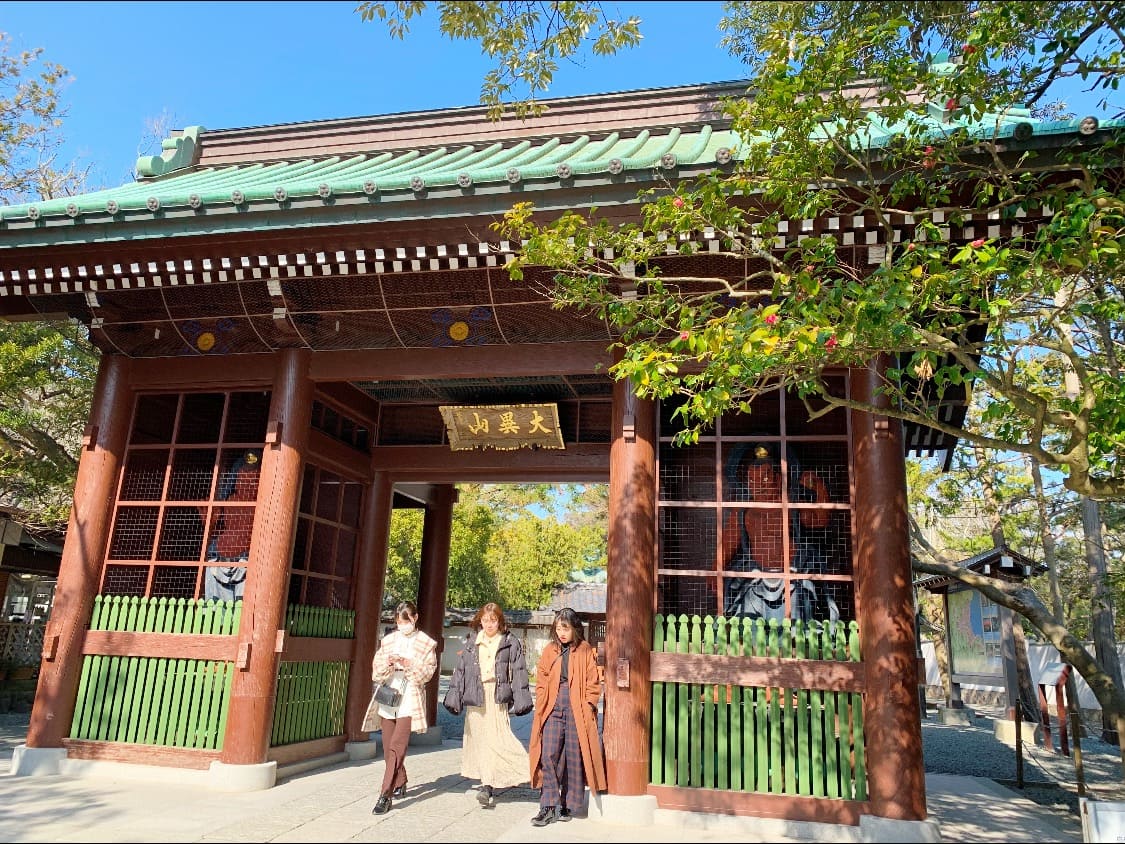
At the entrance to Kotoku-in stands the Nio-mon (the Deva Gate), which holds statues of two Nio-zo (Deva gods) meant to protect the temple. The gate, including both statues and the nameplate, which reads “Taiizan,” another name for the temple, are believed to have been dismantled and moved to Kotoku-in from another location in the early 18th century.
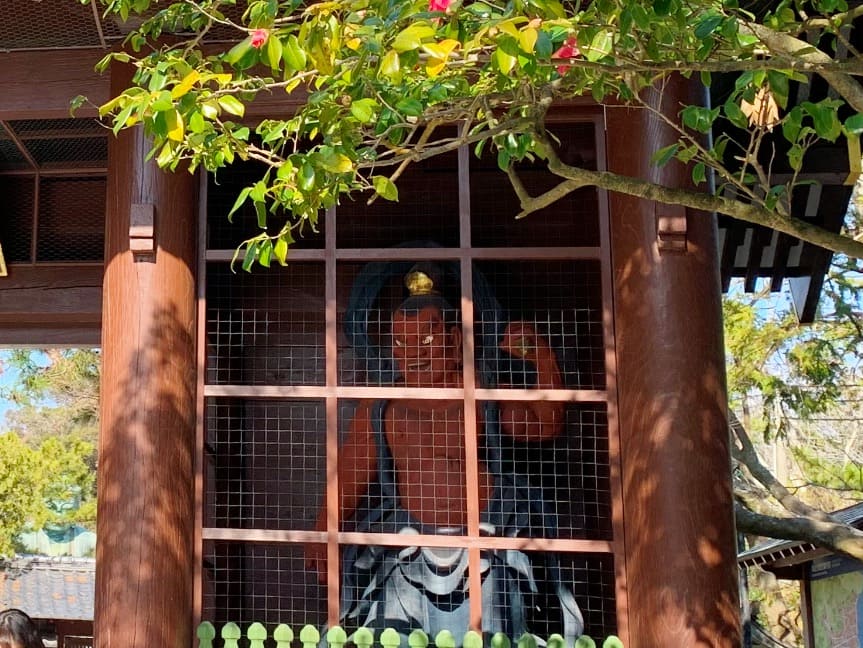
The temple is a must-see during the “Hase Lights” summer attraction, during which the entire temple, from the Nio-mon (the Deva gates) to the Buddha statue, is lit up. Unfortunately, the event was canceled for 2020.
The Symbol of Kotoku-in: the KamakuraBuddha
When it comes to Kotoku-in, its trademark Kamakura Buddha is a must-see.
Despite its overwhelming presence, the Kotoku-in Amithaba Buddha is more affectionately called The Kamakura Buddha or Hase Buddha.
According to the Azumakagami, a medieval Japanese history detailing the short-lived Kamakura Shogunate, construction on the temple began in 1252 (Kencho Period Year 4). However, much of the statue’s construction remains a mystery, such as who created the original design. While it was housed in the Great Buddha Hall at the beginning of its construction, according to the Taiheiki, a historic epic, and the Kamakuraonikki (the Great Kamakura Diary), damaged caused by typhoons in 1334 (Kenmu Period Year 1) and 1369 (Ouan Period Year 2) and the great earthquake of 1498 (Meio Period Year 7) left the base of the statue bare, as it is seen today.
In the Edo Period (1603-1868), the statue was restored and it stands as a symbol of Kamakura for more than 750 years. It attracts the worship of many Buddhists regardless of sects, from both within and without Japan.
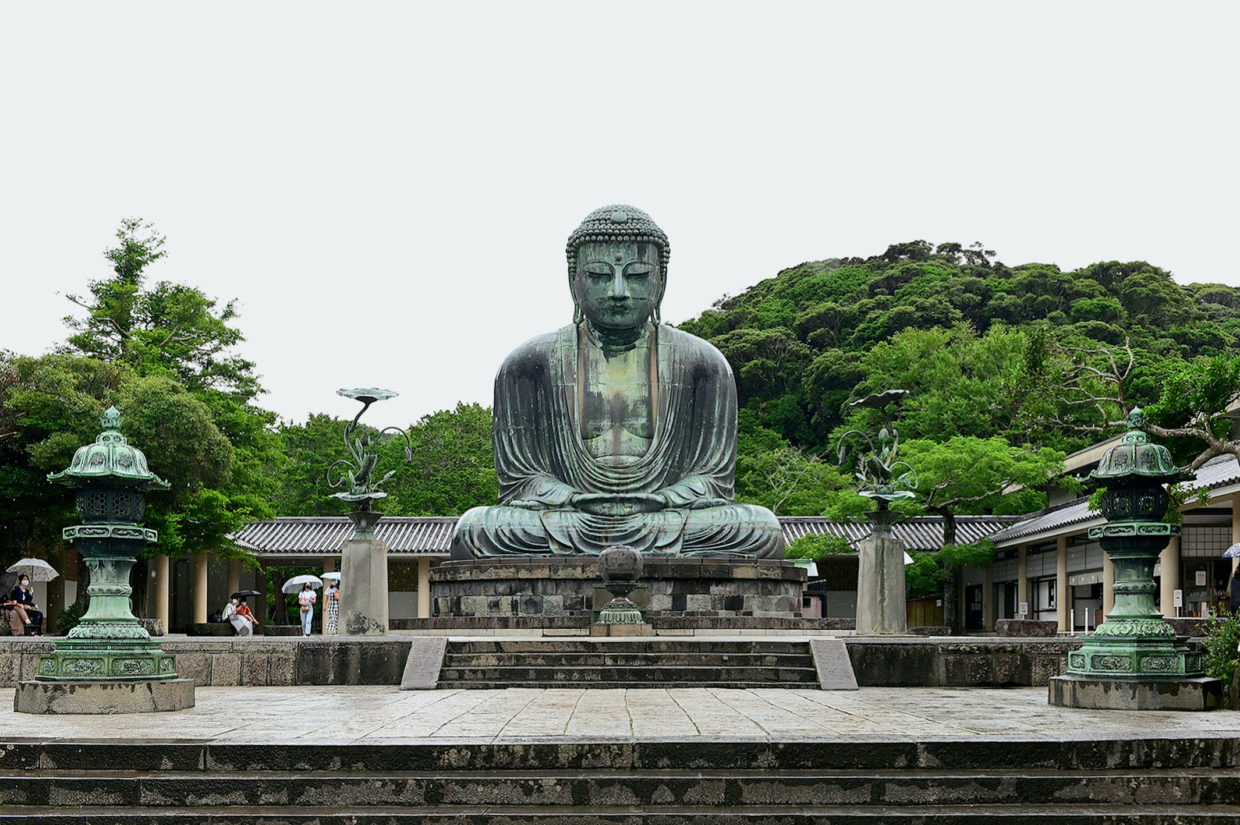
Features and Size of the Kamakura Buddha Statue
There are still many mysteries surrounding the Kamakura Buddha Statue, including who created it. It’s said to be quite representative of the Kamakura period, combining the style of the “Kei School” (Unkei and his followers) with influences from the Chinese Buddhist masters of the Sung dynasty.
While it’s not as large as the Great Buddha of Nara, it’s still about 13.35 meters in height and weighs about 121 tons. It has 656 tightly-curled hair knots and ears are 1.9 meters in length.
Its size truly makes it an overwhelming presence worthy of the name “Great Buddha.” The statue is also invaluable in that its appearance has remained unchanged since its construction, and it is the only Buddhist statue in Kamakura to be designated as a national treasure.

Kotoku-in Grounds
At the back of the grounds is a lush, green walking path. It’s a beautiful place where you can relax and enjoy nature, from the squirrels to the hydrangea flowers and autumn leaves that bloom and change color with the seasons. How about taking a break from sightseeing here?

Relax at “KANNON COFFEE” after Seeing the Great Buddha

After checking out Kotoku-in, you’re going to want to take a bit of a break. We recommend “KANNON COFFEE” for its delicious homemade cookies and coffee. Their speciality is a cookie shaped like the Great Buddha statue. We recommend that you relax here and snap a few pics.
Kotoku-in (Kamakura Buddha)
| Address | 4-2-28, Hase, Kamakura City |
| Access | 8 minute walk from Enoden Hase Station |
| Hours of Operation | April ~ September:8:00〜17:30 October ~ March:8:00〜17:00 |
| Admissions | 200 yen ※Admission ends 15 minutes before closing |
| URL | https://www.kotoku-in.jp/en/ |
Our goal is to help not only tourists from Japan and abroad, but also all visitors to Kamakura to make their time and experience in Kamakura even more wonderful, and we hope that you will become a fan of Kamakura. We hope to make Kamakura a favorite among all visitors to Japan.
For more information about BEEP Corporation.
Popular posts
-
 Introducing popular sightseeing spots and recommended cafes for lunch in Shichirigahama!
Introducing popular sightseeing spots and recommended cafes for lunch in Shichirigahama! -
 The Popular Tourist Destination Houkokuji Temple (Bamboo Temple) And Its Speciality
The Popular Tourist Destination Houkokuji Temple (Bamboo Temple) And Its Speciality -
 STOP HERE WHEN YOU VISIT 16 Different Guest Homes By Area
STOP HERE WHEN YOU VISIT 16 Different Guest Homes By Area -
 The Japanese Sweets House Popular At Kamakura “Kirara” - The Recommendations and How To Go
The Japanese Sweets House Popular At Kamakura “Kirara” - The Recommendations and How To Go -
 Enjoy a Date, a Swimming or Walking at Yuigahama! Introducing Nearby Cafes and Access!
Enjoy a Date, a Swimming or Walking at Yuigahama! Introducing Nearby Cafes and Access!
Related Articles
-
 History2022.06.21Kamakura's Seven Entrances - Nagoe Pass: Experience Medieval Kamakura with Your Five Senses
History2022.06.21Kamakura's Seven Entrances - Nagoe Pass: Experience Medieval Kamakura with Your Five Senses -
 Sweets2022.10.12The Japanese Sweets House Popular At Kamakura “Kirara” - The Recommendations and How To Go
Sweets2022.10.12The Japanese Sweets House Popular At Kamakura “Kirara” - The Recommendations and How To Go -
 Shrine2022.01.06Report on Tsurugaoka Hachiman-gu's Dondo-Yaki (Sagicho)
Shrine2022.01.06Report on Tsurugaoka Hachiman-gu's Dondo-Yaki (Sagicho) -
 Temple2022.11.07The Popular Tourist Destination Houkokuji Temple (Bamboo Temple) And Its Speciality
Temple2022.11.07The Popular Tourist Destination Houkokuji Temple (Bamboo Temple) And Its Speciality -
 Shrine2022.05.202022 Is A Great Year For Kamakura! Amanawa Shinmei Shrine, The Temple Loved By Minamoto no Yoritomo.
Shrine2022.05.202022 Is A Great Year For Kamakura! Amanawa Shinmei Shrine, The Temple Loved By Minamoto no Yoritomo. -
 Workshop2023.10.06Enjoy Creating Your Own Umeshu at Choya Kamakura Store
Workshop2023.10.06Enjoy Creating Your Own Umeshu at Choya Kamakura Store
